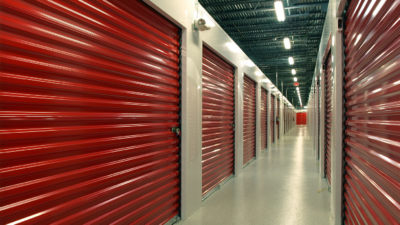
“The Shenandoah Valley/I-81 Corridor industrial market is transitioning from a sleepy backwater warehouse and manufacturing submarket to a true regional player in the Mid-Atlantic. The three states that comprise the market along the Interstate 81 Corridor are hitting on all cylinders. Winchester, Virginia has welcomed the first one million square foot distribution center for Amazon. Proctor & Gamble is developing a 400-acre, three million square foot industrial campus in Martinsburg, West Virginia and Trammell Crow is planning a one million square foot speculative warehouse in Hagerstown, Maryland. Decreasing vacancy rates, increased absorption and constrained supply will result in more speculative development in the near future.
The expansion of the Virginia Inland Port in Front Royal should drive further regional growth. Additionally, high land prices and rental rates in the Washington, D.C. metropolitan area will result in outmigration to the Valley by developers and users, respectively. Investment sale opportunities for Class A warehouse space are few and far between and will continue to pose an ongoing challenge. These market dynamics and the expanding economy bode well for continued growth of the industrial sector.” — John Lesinski – Executive Vice President | McLean, VA
Key Strengths:
The Shenandoah Valley/I-81 Corridor is a cost-effective alternative to markets further north in the Lehigh Valley and central Pennsylvania. The Port of Baltimore and the Port of Virginia provide rail access through CSX and Norfolk Southern, respectively. Combined with access to labor markets in Virginia, Maryland and West Virginia, these factors make the area particularly attractive to employers. The Shenandoah Valley region offers a plethora of advantages including land available for development and proximity to the metro Washington, D.C., Baltimore and Ohio Valley population bases. The market can potentially reach one of the largest population concentrations in the country, as over 45 million people live within 250 miles of the market’s core.

Logistics Driver:
The Virginia Inland Port (the Port) is approximately 60 miles west of Washington, D.C. and occupies 161 acres of land. The terminal brings the Port of Virginia 220 miles closer to inland markets and enhances service to the Washington, D.C. and Baltimore metro regions by providing rail service to terminals in Hampton Roads. The Virginia Inland Port also consolidates and containerizes local cargo for export.
The market also easily connects via rail and highway to Hampton Road’s Port of Virginia. With some of the most advanced container terminals in all the Americas, the Port of Virginia serves as a global gateway to commerce. It is also an economic engine for the Commonwealth of Virginia and the contiguous Mid-Atlantic states. More than 374,000 jobs are linked to the Port — equal to 9.4% of Virginia’s workforce. The Port of Virginia is home to Foreign Trade Zone 20, where more than $1.6 billion of total merchandise is received annually. The Port of Virginia offers direct service to more than 45 countries worldwide and is a day’s drive from two-thirds of the U.S. population. Through the first six months of 2018, loaded inbound container volume at the port has increased by 8.6% compared with the previous year.
Vacancy:
The Shenandoah Valley/I-81 Corridor industrial market, which totals 93 million square feet of existing space saw vacancy rates drop the first half of 2018 to a decade low 5.5%. Vacancy rates dropped 20 basis points to end at 5.3% in the warehouse sector while the flex sector ended the quarter at 9.2%. The class A vacancy rate dropped 20 basis points to end the quarter at 7.2%. When comparing size ranges, buildings more than 500,000 square feet remain the tightest, finishing mid-year at 2.4% vacant.
Absorption:
The market is one of the fastest growing markets in the country, finishing midyear with more than 2 million square feet of occupancy gains, already higher than total net absorption in all of 2017. The market’s growth rate (absorption as a % of inventory) was 2.3% at midyear, the fifth highest in the U.S. Overall net absorption looks to continue or even surpass its current rate in the second half of 2018 because of continued demand from both regional and final-mile occupiers and the completion of many large pre-leased buildings.
Development:
There were six buildings under construction at the end the quarter, totaling 2.36 million square feet of space. During the second quarter, Eldor delivered 250,000 square feet. This building was fully occupied, and is located in the Botetourt, Virginia submarket. Procter & Gamble continued construction at their campus, with more than one million square feet still underway at the end of the quarter. The FBI’s 256,000 square foot Central Records Complex, in the Frederick County, VA submarket, is underway and will be fully occupied by the agency. Stonewall Industrial Park Phase III, a 287,000-square-foot building, is also underway in the Frederick, VA submarket and should deliver during the third quarter of this year. This building was leased entirely by Rubbermaid.
Asking Rents:
Overall asking triple net rates in the Shenandoah Valley market have increased during the quarter, rising $0.05, to end the quarter at a decade high $4.26 per square foot. This compares to a year ago when the rental rate stood at $4.12 per square foot. Overall average rental rates for warehouse product increased $0.11 to end the quarter at $4.14 per square foot while rental rates for flex remained flat, ending the quarter at $5.36 per square foot. Class A warehouse product is seeing rates closer to $4.50 per square foot in the market.
Historical Data |
||||||
|---|---|---|---|---|---|---|
| Inventory | Overall Vacancy Rate | Overall Net Absorption | New Supply (Construction) | Under Construction | Asking Rental Rate (PSF/YR) | 2009 | 86,121,182 | 12.1% | -1,004,541 | 1,165,641 | 39,200 | $3.54 | 2010 | 86,160,382 | 11.2% | 830,842 | 39,200 | - | $3.54 | 2011 | 86,160,382 | 10.3% | 780,812 | - | 1,496,284 | $3.57 | 2012 | 87,656,666 | 10.0% | 1,615,560 | 1,496,284 | 553,458 | $3.57 | 2013 | 87,760,068 | 9.3% | 794,976 | 103,402 | 450,056 | $3.80 | 2014 | 88,280,124 | 8.6% | 1,129,105 | 520,056 | - | $3.79 | 2015 | 89,062,993 | 7.5% | 1,262,612 | 400,000 | 1,951,323 | $3.83 | 2016 | 89,907,018 | 6.6% | 2,425,005 | 875,925 | 1,824,673 | $3.86 | 2017 | 91,363,418 | 6.4% | 1,611,154 | 1,500,400 | 3,435,273 | $4.07 | Q2 2018 | 92,687,691 | 5.5% | 2,059,678 | 1,324,273 | 2,367,000 | $4.26 |
| Overall Vacancy Rate Q2 2017 | Overall Vacancy Rate Q2 2018 | Asking Rental Rate Q2 2017 | Asking Rental Rate Q2 2018 | 30,000-49,999 SF | 6.1% | 5.8% | $5.04 | $4.81 | 50,000-99,999 SF | 7.3% | 5.0% | $4.10 | $4.16 | 100,000-199,999 SF | 11.5% | 10.2% | $4.22 | $4.04 | 200,000-299,999 SF | 7.6% | 7.7% | $3.09 | $3.66 | 300,000-399,999 SF | 4.1% | 4.6% | $3.91 | $3.62 | 400,000-499,000 SF | 6.4% | 5.3% | $4.41 | $4.87 | 500,000 SF + | 2.6% | 2.4% | $4.11 | $4.73 |
|---|
Source: Colliers International
For more insights, learn about the top 10 U.S. industrial emerging markets positioned to experience the most robust increases in demand from occupiers and owners. Read all the past market spotlights here and stay tuned for more Industrial Markets of the Month!

 Colliers Insights Team
Colliers Insights Team
 Craig Hurvitz
Craig Hurvitz
 Aaron Jodka
Aaron Jodka